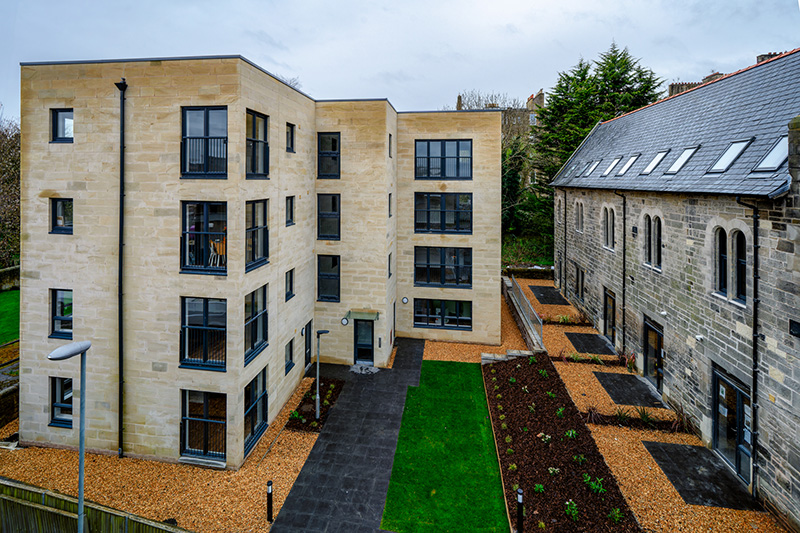
THE economic and social benefit created by the delivery of mid-market rent (MMR) properties has been highlighted in a new report commissioned by not-for-profit developers HHA and Lar Housing Trust, and fund and asset manager for social housing, Thriving Investments.
Prepared by Turley, the research is based on the delivery of 2,959 MMR homes, accommodating approximately 6,230 residents across 12 local authority regions in Scotland. The findings conclude that together, HHA, Lar Housing Trust and Thriving Investments have:
- Delivered £530 million of investment in the construction sector, supporting around 2,230 temporary full-time equivalent (FTE) jobs over the total construction period.
- Created an additional £186.3 million in Gross Value Added across Scotland, during the construction period.
- Generated £77 million annual earnings for residents. Subsequently this has supported local businesses, with £59.9 million of this spent on retail and leisure.
- Enabled £5.9 million in additional Council Tax payments annually.
MMR homes are a type of affordable housing usually found within larger urban centres. They often help households on modest incomes, which may have difficulty accessing social rented housing, buying their own home, or renting privately. They are typically priced lower than private rent, and slightly higher than affordable housing.
Gail Matheson, CEO at HHA, said, “MMR homes enable people who are unable to secure social housing yet cannot afford private rent, to access high-quality housing. This new report gives a wide lens view of the incredible economic benefit we have helped to deliver, creating new job opportunities and supporting local supply chains in the process.
“The housing emergency continues to hang over the sector and unfortunately, we are a long way from balancing supply and demand for homes. However, this report shows the value MMR homes create both in local communities and at a national level. Its unique model is an important tenure in our housing mix, and I am hopeful that we see more investment earmarked to deliver it at a larger scale across the country.”
Currently, the MMR providers utilise grant funding and loans from the Scottish Government and private investment to deliver developments. Loan funding effectively means that over time as loans are repaid, multiple rounds of homes can be funded from the same amount of capital.
Ann Leslie, chief executive of Lar, added, “This excellent report shows the impact that comes from the bold approach taken by MMR providers. In order to tackle the housing crisis gripping the country and reduced housing grant budgets, we need a bold and innovative approach offering a mix of funding options to help provide more affordable homes.
“This report shows that loan-based funding must be front and centre of any drive to build more affordable homes offering multiple benefits, including repurposing derelict buildings, creating new communities and breathing life into local economies. Now is a time for leadership from the Scottish Government.”
If sufficient funding can be secured from the Scottish Government and other investors over the next five years, this is tipped enable the development of over 4,500 new MMR homes across Scotland.
William Kyle, fund director at Thriving Investments, commented, “It is clear that in a climate of considerable financial constraints and in the midst of a housing crisis, we need innovative solutions to improve affordable housing opportunities. The delivery of MMR properties has played a key role in addressing the demand for new homes throughout Scotland, whilst simultaneously brought buildings back into use, regenerated brownfield land and assisted employment opportunities across the sector. The report importantly highlights how we can continue on this successful path with the right funding pillars in place.”











